Matador Network's Blog, page 512
March 16, 2022
Bookend Your Trip to Los Angeles at These Inspiring Hotels Near LAX

Los Angeles International Airport (LAX) is located just south of Venice Beach, a central location that separates it from the trend of major cities building airports far outside of city centers. For travelers, this means the city is right there (though, it takes battling LA traffic to access it). Staying at hotels near Los Angeles Airport puts you close to the terminal as well as the beach and attractions — making these properties a sure win for business trips, solo travel, and for travelers basing themselves in LA before or after heading up or down the coast. These are the best Los Angeles airport hotels.
Headliner hotels near Los Angeles International AirportTop Marriott Bonvoy Los Angeles airport hotelsTop Hilton Honors Los Angeles airport hotelsWe hope you love the hotels near Los Angeles Airport we recommend! Just so you know, Matador may collect a small commission from the links on this page if you decide to book a stay. Listed prices are accurate as of the time of publication. See our full Advertiser Disclosure here.
Headliner hotels near Los Angeles AirportHyatt Regency Los Angeles International Airport

Photo: Booking.com

Photo: Booking.com

Photo: Booking.com

Photo: Booking.com
With a 24-hour transfer service that takes less than five minutes, airport hotels don’t get more convenient than the Hyatt Regency Los Angeles International Airport. If you just have a carry-on bag, you can easily walk here. It is located across Sepulveda Blvd. from the airport’s rideshare pickup spot, and features a 24-hour market for late and early arrivals as well as a restaurant and bar. This is the best hotel to base yourself at after a red-eye flight, and for times when you need quiet and convenient night’s rest before an early flight.
Price: From $161 per night
Aloft El Segundo
Photo: Booking.com

Photo: Booking.com

Photo: Booking.com

Photo: Booking.com

Photo: Booking.com
No hotel brand epitomizes the hip aesthetic of the modern adventurer quite like Aloft. Part of the Marriott family, Aloft El Segundo’s pool, outdoor fire pit, and indoor lounge are inviting spaces that make you actually want to spend time at the hotel. Rooms are brightly decorated, with a metropolitan aesthetic that calls to LA’s international flare. Find yourself in a suite lounging on the purple couch, and you’re sure to feel like a rock star, no matter your reason for being in the city. All this while allowing you to collect and redeem Bonvoy points.
Price: From $127 per night
Top Marriott Bonvoy hotels near Los Angeles International AirportSheraton Gateway Los Angeles Hotel

Photo: Booking.com

Photo: Booking.com

Photo: Booking.com
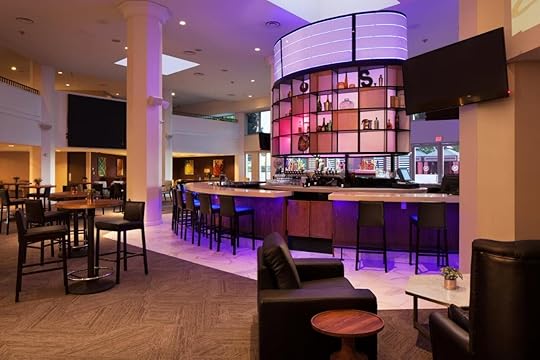
Photo: Booking.com
Hip and modern, the Sheraton Gateway Los Angeles Hotel is the type of place you’d want to settle in for a while. This is a great base for work trips to LA, as the in-room work desks and availability of suites make for a comfortable pad. The onsite cafe is also a great spot to settle down with your laptop. Plus, the heated outdoor pool and onsite Costero Bar and Bistro are great leisure options to unwind at the end of the day. Rooms are well-trimmed and recently remodeled, with the down pillows and high-thread-count sheets the brand is known for. The hotel’s breakfast buffet is a destination even for adventurous locals, so be sure to pop in before heading to the airport.
Price: From $129 per night
Courtyard by Marriott Los Angeles Airport
Photo: Booking.com

Photo: Booking.com

Photo: Booking.com

Photo: Booking.com
Courtyard by Marriott Los Angeles Airport provides the niceties of soundproofed rooms complete with a refrigerator and extra lounge space. The hotel’s apartment-esque vibe makes it a comfortable place to stay with families or groups. Breakfast and dinner are available at the onsite bistro and the hotel features a grab-and-go market that is ideal for early morning and late-night flyers. Its proximity to the airport — a five-minute shuttle — makes it easy to get to the terminal no matter the time of day.
Price: From $143 per night
Top Hilton Honors hotels near Los Angeles International Airport
Taking a trip to Southern California? Check out Matador’s guides to the best places to stay across the region:
16 unique Airbnbs in Los Angeles’ trendiest neighborhoods 10 soulful beach Airbnbs for the perfect SoCal yoga retreat 9 dreamy oceanfront Airbnbs up and down the California coast Big Bear cabins for the ultimate SoCal ski getaway
H Hotel Los Angeles

Photo: Booking.com

Photo: Booking.com

Photo: Booking.com

Photo: Booking.com
If you want to feel like you live in a hip LA high rise, the H Hotel Los Angeles is the place to do so. Its elegant rooftop patio offers views from the coast to the city. Rooms are clean, cozy, and quiet. The hotel itself is an ode to artistic design, from the waved bricks running its exterior from top to bottom, to the palm-lined outdoor pool and bright lobby. If you need a place to impress on a quick trip, do it here.
Price: From $179 per night
Homewood Suites by Hilton Los Angeles International Airport
Photo: Booking.com

Photo: Booking.com

Photo: Booking.com
Each suite at Homewood Suites by Hilton Los Angeles International Airport features a living room and sleeping area. Two-bedroom suites are available if you need more room. Spread out on the couch and relax or get some work done at the desk. Tuck into the Waypoint Kitchen and Bar for dinner and a drink. The outdoor pool is set with palm trees and plenty of seating space, an ideal feature in a city with balmy weather year round. If staying in Los Angeles for multiple days, and combining the amenities of a hotel with the comforts of an apartment, there is no better place to stay.
Price: From $179 per night
Embassy Suites LAX North and South
Photo: Booking.com

Photo: Booking.com

Photo: Booking.com

Photo: Booking.com
Whether you’re headed north to Venice and Hollywood or heading south towards El Segundo and Orange County, there’s an Embassy Suites near LAX on the way. Both the north and south locations offer expansive lounge seating in the lobby with a cafe serving meals throughout the day. A cooked-to-order breakfast is complimentary, and all rooms are — as the name suggests — suites. The vibe at Embassy Suites properties is one of attainable opulence — everything about the stay is top-tier and kids love the wraparound hallways encircling the vaulted-roof lobby.
Price: From $152 per night
Top World of Hyatt Rewards hotels near Los Angeles International AirportHyatt House LAX Century Blvd

Photo: Booking.com

Photo: Booking.com

Photo: Booking.com

Photo: Booking.com
Hyatt House is the spot for adventure travelers and remote workers posting up for a night or two, before or after experiencing the great outdoors of Southern California. You’ll find a bar and pool table in the lobby with plenty of space to lounge, work on the laptop, or socialize around the rooftop pool and lounge. The hotel is a scene in and of itself, with brightly-decorated rooms featuring big, comfortable beds and views out over the city. It’s a great place to separate yourself from the sprawling city around you. 
Price: From $151 per night
More like thisWhere to Stay16 Unique Airbnbs in Los Angeles’ Trendiest NeighborhoodsThe Most, and Least, Expensive States for a Pint of Guinness

It’s March, and while there’s no bad time for a Guinness, this month is an especially good one for anyone with St. Patrick’s Day on their mind. The famed Irish dry stout that has it’s own codified perfect pour is far more Irish than any green beer you may see on the menu, after all. Depending on where you’re at in the United States, that perfect pour may be incredibly affordable or cost a pretty penny. FinanceBuzz, a publication meant to help with your finances, crunched some numbers to find which states have the most and least expensive price on a pint of the cold, dark, and creamy stout.

Photo: FinanceBuzz
A pint of Guinness runs for more than $8 in only three states (and one district). Six out of 10 of the most expensive places to buy one are on the East Coast, but the most expensive state to buy a Guinness is California. This $8.55 beer matches the state’s high cost of living.
The most expensive states for a pint of Guinness:California — $8.55Nevada — $8.54District of Columbia — $8.10Massachusetts — $8.00New York — $7.90New Jersey — $7.75Hawaii — $7.60Maryland — $7.60Virginia — $7.50Texas — $7.45If you’re looking for the cheapest pints, you’ll have to head to the plains and the South. Montana took the award for the lowest price point with an average pint price of $5 — more than $3 cheaper than the three highest-priced places.
The cheapest states for a pint of Guinness:Montana$ — 5.00Alabama — $5.35Iowa — $5.60South Dakota — $5.70West Virginia — $5.75Georgia — $5.90New Hampshire — $5.90Vermont — $6.00Louisiana — $6.05Mississippi — $6.05Nebraska — $6.05To find you the cheapest pint of Guinness, FinanceBuzz averaged five different pubs or bars in each state from online menus to find the average cost per pint. Guinness is traditionally served as a 20-ounce imperial pint, but some bars in this analysis serve a 16-ounce American pint instead. So keep in mind, this data may not reflect your hometown. All that said, these averages are an interesting look at what you may expect when you order a pint this St. Patrick’s Day. 
Celtic flags of the Celtic nations

Many people would struggle to name the six Celtic nations in the world: Ireland, Scotland, Wales, Cornwall, the Isle of Man, and Brittany. Even fewer would be able to place them on a map or explain the differences between each.
Among the most prominent distinctions between the six Celtic nations are the languages they speak (Irish Gaelic, Scottish Gaelic, Welsh, Cornish, Manx, and Breton, respectively) and the flags they fly. There are as many Celtic flags as they are Celtic nations, and each has its own significant color scheme and composition.
These are the six Celtic flags and the meaning behind each design.
Celtic flag #1: Ireland
Photo: Le Printemps/Shutterstock
The flag of the Republic of Ireland, also known in Irish Gaelic as bratach na hÉireann, or commonly referred to as the tricolour, is rectangular and composed of three colors arranged in equal-size vertical stripes: green (always next to the flagstaff), white (always in the middle), and orange (always farthest from the flagstaff).
Green represents the Irish Republicans who fought for Ireland’s independence from Britain, while orange evokes the Irish protestants. White is meant to unite the other two colors and symbolize peace between the two groups.
This Celtic flag was adopted as the flag of the Irish Free State in 1922 and confirmed as the National Flag in 1937. For more information on the Irish flag, including its detailed history, how to display it, how to salute it, and more, consult Article 7 of the Constitution of Ireland.
Celtic flag #2: Scotland
Photo: brunacanavezi/Shutterstock
Scotland’s flag, also known as the Saltire, is a rectangular flag with a blue background (Pantone 300) and a white diagonal cross.
The name Saltire comes from the cross saltire of St. Andrew, who’s the patron saint of Scotland. St. Andrew is believed to have been martyred on a diagonal cross.
One of the six Celtic flags, the Saltire is said to be the oldest flag in Europe, originating in the village of Athelstaneford, Scotland, in 832 AD. Today, Athelstaneford is home to National Flag Heritage Centre, where you can learn everything there is to know about the flag.
The Saltire is included in the design of the Union Jack, the national flag of the United Kingdom which consists of three crosses: the cross of St. George, the cross saltire of St. Andrew, and the cross saltire of St. Patrick.
Celtic flag #3: Wales
Photo: steved_np3/Shutterstock
The national flag of Wales, also known as Y Ddraig Goch (the red dragon) in Welsh, is rectangular in shape and composed of two equal horizontal stripes: one green (at the bottom of flag) and one white (at the top). A large red dragon, facing the flagstaff, is featured in the center of the flag.
According to the Flag Institute, the red dragon has been a symbol of Wales since around 655 CE.
The Welsh flag is a recent one, having been adopted in 1959. The previous iteration of the Welsh flag, adopted in 1953, featured the same colored horizontal stripes, as well as a small red dragon, surrounded by a ribbon of Welsh words: Y Ddraig goch ddyry cychwyn (meaning “the red dragon gives impetus”).
Celtic Flag #4: Cornwall
Photo: James Pearce/Shutterstock
The Cornish flag, also know as the flag of St. Piran (Baner Peran in Cornish), is a rectangular shape and features a white cross on a black background.
According to the BBC, the two simple shades of this Celtic flag symbolize “white tin flowing from the black rock, or good overcoming evil.”
St. Piran is the patron saint of tin miners and the patron saint of the English county of Cornwall as a whole. St. Piran is celebrated every year on March 5 with parades and celebrations, during which the Cornish flag is flown proudly.
Celtic Flag #5: Isle of Man
Photo: Millenius/Shutterstock
The Manx flag is a rectangle featuring The Three Legs of Mann on a red background. The Three Legs of Mann, also called the Manx triskelion, is the symbol of the Isle of Man, a Celtic nation that is a self-governing possession of the British Crown.
The Three Legs of Mann are three armored and spurred legs arranged in a triple spiral. The knees, the spurs, and the center of the triskelion are yellow while the legs are the gray color of steel.
The Manx triskelion is believed to have originated in the 13th century. The Manx National Heritage association explains that the Three Legs of Mann “was originally a symbol of the sun and of power and life” during Pagan times.
The flag of Sicily, which is not a Celtic nation, also features a similar triskelion of legs.
Celtic flag #6: Brittany
Photo: Desroziers Allan/Shutterstock
The Breton flag, also known as Gwenn ha du (black and white) in Breton, is the flag of the Celtic region of Brittany in France. It is rectangular with nine alternating black and white stripes, each representing one of the nine historic areas of Brittany. In the top left-hand corner of the flag, next to the flagstaff, is 11 black ermines. The composition of this Celtic flag is very similar to the one of the US flag.
The ermine, while a Breton symbol, is also the French translation for a stoat, a small weasel whose coat becomes white during winter, except for its tail which remains black. The ermines featured in the Breton flag represent the tail of the animal.
While the ermine has been the symbol of Brittany since the 14th century, the Breton flag is relatively recent — it was created in 1925 to unify the then-threatened Breton identity. 
This Airport Security Scanner Could End Carry-on Liquid Restrictions

One of the most asinine things about airport travel is traveling through airport security. Thanks to a foiled terrorist plot in 2006 that involved explosives in soft drinks, countries around the world banned liquids in carry-ons before settling on the “3-1-1 rule.”
For more than a decade, passengers have only been permitted to carry liquids that are 3.4 fluid oz or less that are carried in a one-quart size bag. The 3-1-1 rule can be one of the most tedious for people who pack strictly carry-ons (those who always check a bag, however, have escaped the annoyance). It’s led to lots of water bottle chugging in the security line and plenty of liquidy food thrown away. It’s also meant that if you pack your favorite full-size bottle of lotion in your carry-on, intentionally or by accident, then you can kiss it goodbye at airport security as it goes straight in the trash, forcing you to buy new travel-sized products, get reusable travel carriers, and spend time squeezing everything out into the strictly sized bottles.
New technology, however, means the reign of the 3-1-1 rule may come to an end. Many airports are updating scanner technology to CT scanners. In September 2021, the TSA announced a $198 million investment for more CT X-Ray scanners at airport checkpoints. CT scanners are more sophisticated because they can check bags in 3-D at 360 degrees and assess if any substance presents a threat. Thanks to these scanners, the Shannon airport in the Republic of Ireland has become the first airport to say goodbye to stringent liquid rules.
The airport specifies that passengers can now take liquids, gels, pastes, lotions, and cosmetics in containers of any size through the passenger security point, including “water, baby food, medicines and other beverages, aerosol cans and toiletries like toothpaste, shaving cream, hair gel, lip gloss, and creams.” All items must be in resealable containers and your bag should have liquids at the top.
Keep in mind that this is the first of its kind. So if you’re flying round-trip, you might want to stick by the old rules anyway or simplify things by checking a bag. Hopefully these changes will make their way to the US soon. 
The New iPhone Update Finally Addresses One of the Most Annoying Parts of Masked Travel

It’s been two years since COVID-19 became a reality for people in the United States, and nearly two years since the Centers for Disease Control and Prevention first suggested people wear masks to slow the spread. Something else that masks slow down? Access to an iPhone that uses Face ID. But now Apple finally has a solution: Face ID that can identify you and unlock your phone even when masked up.
Mask-friendly Face ID is part of Apple’s iOS 15.4 update that’s available for iPhone models 12 and newer. (It also works through Apple Watch if you have an older phone running iOS 14.5 or later.) Users are prompted to set up Face ID again as soon as the update is complete. All it took was staring into my phone, mask off, and turning my head in a circle to get it working.
Getting into my phone with my mask on has been one of the most persistent minor annoyances the past year as travel picked back up. Going back to the old days of entering my phone password (often in front of others) every time I needed to check something wasn’t something I expected to be such an inconvenience, but it became a regular frustration. Sure, there have been more than enough bigger problems to deal with. That doesn’t mean having to type in my password or lower my mask wasn’t inconvenient to the point of wishing Apple never got rid of fingerprint access.
The new update means being able to seamlessly use Apple Pay, get into my bank apps, get into sports betting apps, make online purchases, quickly check my travel documents on my phone, and take advantage of the password autofill feature while keeping my mask on. Obviously it also unlocks my phone with a mask, too.
When setting up the feature, users are given the following explanation:
“Face ID is most accurate when it’s set up for full-face recognition only. To use Face ID while wearing a mask, iPhone can recognize the unique features around the eye area to authenticate. You must be looking at your iPhone to use Face ID while wearing a mask.”
Glasses wearers are in luck, as Face ID can now be set up to recognize each pair of glasses you wear as well (minus sunglasses). Apple also now allows for an alternate appearance to unlock your phone using Face ID.
Some may feel like it’s a little late for this update to matter. Most states have since dropped mask mandates due to rapidly declining case numbers. The primary holdouts where masks are required are airports and planes, along with some public transportation and rideshares like Uber and Lyft. These also happen to be places that frequent phone checking is needed.
And while the air travel mask mandate was recently extended to April 18, it’s unknown if the federal government will decide to extend it again after that. Experts predict the mask mandates will end before the midterm elections on November 8.
Whether it goes or stays, there’s will be plenty of people who choose to continue masking up — especially when dealing with crowded transportation situations. Other countries also have different mask requirements, so the Face ID update will help make travel abroad easier as well.
Yes, it would’ve been nice to have this feature years ago when walking into any public space required a mask. But better late than never.
The Best Cruise Line Drink Packages for Every Budget

It can be a total buzzkill to constantly pull out your wallet on vacation. If you’re planning a trip on a vacation this spring, one way around that is to take advantage of cruise line drink packages. Cruise lines’ all-inclusive drinks packages mean you pay a flat daily fee up front—and never again—for all the wine, beer, soda, coffee, tea and cocktails you can possibly drink. This per-person fee provides flexibility in a group if some people want to drink more than others.
Particularly when cruising during spring break, cruise line drink packages are a way to take financial worries out of the equation and simply kick back and relax. And there’s no denying that drinking is a big part of vacationing on a cruise line, especially since you don’t have to worry about finding a designated driver. Cruise lines put as much attention on their bars and lounges as they do restaurants, with many organized by theme – such as a nightclub, piano bar, wine bar or romantic lounge. Bar-hopping on-board is as much an activity as a shore excursion off the ship. So if you enjoy letting loose on a cruise ship, you might want to seriously consider looking into the cruise line drink packages on the ship of your choice.
These drink packages are not just about alcohol and sodas: some provide unlimited specialty coffee and espresso drinks, a big plus if you’re a java addict, as well as non-pressed juices. Some include gratuities while others do not. It’s worth checking when pricing these out.
The reasons why someone might spring for a drinks package and not balk at the total price (between $9 and $128 per day, although mostly in the $50-$60 range per day) comes down to convenience and budget. Now you know exactly how much you’ll be paying for drinks—and not a penny more.
In planning a cruise vacation, so much is decided weeks before you hop on board, including the cabin category and shore excursions. Why not remove one more decision and start focusing on what to pack instead? Here is your complete guide to cruise line drink packages, and all the information you need to decide which one is right for you.
Virgin VoyagesRichard Branson’s new cruise line—its first ship sailed last August—offers Essential Drinks on Us for free on every sailing. This includes filtered still and sparkling waters, non-pressed juices, sodas, teas and coffee. There isn’t a drink package per-se like other cruise lines with daily fees but you can drop $300 on a pre-paid tab—which gets you an extra $50.
Pros: Virgin Voyages hired top-notch mixologists (like James Beard Award winner Charles Joly, the Academy Awards’ official bartender) to develop a drinks menu. Also, you can use this pre-paid bar tab for others in your party.
Cons: With drink prices fairly low—$5-$6 for beer, $9 for cocktails and 42 percent of wines under $10 a glass, plus tips included—you may not need that extra $50 bonus if you pre-pay $300.
Carnival CruisesThere are two options for drinks packages available on Carnival Cruises: Bottomless Bubbles (soft drinks and juices only, $5.95 child and $8.50 adult, per day) and Cheers! (like the name implies, this one offers wine, beer and cocktails—in addition to soft drinks, juices, teas and coffee, $51.95 per day).
Pros: While wine-by-the-glass and cocktails (under $20 on the menu) are included in the Cheers! package, you also get 25 percent off a bottle of wine or Champagne, and glasses on the menu over $20, in case you want to splurge a night or two.
Cons: Carnival Cruises’ cocktail and beer lists are more in-depth than its wine selections. If you’re more of a wine drinker, looking for higher-end labels, this might not be too enticing.
MSC CruisesTwo of MSC Cruises’ five drink packages (Alcohol-Free Package and Minors Package) cater to dry sailors, too with mocktails, sodas, energy drinks, mineral and flavored waters, fruit juices, coffee drinks, hot chocolate and tea. For the Easy Package (covers drinks priced up to $6 on the menu at $38 per day), Easy Plus Package (covers drinks up to $9 at $49 per day) and Premium Extra Package (covers drinks up to $15 at $69 per day), you get all that plus the alcohol.
Pros: Just like kids sail free on many MSC Cruises sailings, two drinks packages (Minors and Alcohol-Free) cater to little ones, too.
Cons: Only two beer brands are covered in the Easy Package – Heineken and Miller Lite – and no frozen classic cocktails.
Celebrity CruisesThere are two alcohol packages on Celebrity Cruises: Classic (covers drinks up to $9, for $59 per day) and Premium (covers drinks up to $15 for $69 per day), and three non-alcoholic options, too.
Pros: The Premium Non-Alcoholic package expands beyond soda, coffee and teas. Coconut water, normally a costly choice, is also unlimited. There’s also a Wines by the Bottle option, sold in three, five or seven bottles in each package – perfect if you’re traveling in a group.
Cons: In some of the spirits categories, there are twice as many options with the Premium package, which is more expensive.
Princess CruisesAmong the most simplest of the cruise lines’ drink packages (in terms of deciphering all the options), Princess Cruises offers only four options: Premier Beverage Package (covers non-alcoholic and alcoholic drinks up to $12 on the menu, for $59.99 per day), Premier Coffee and Soda Package (coffee and teas, hot chocolate, sodas, mocktails, energy drinks, smoothies and milkshakes, for $19.99 per day) and Classic Soda Package (sodas, fruit juices, mocktails and smoothies, for $9.99 per day).
Pros: Got a sweet tooth? Milkshakes and coffee frappes are covered in the Premier Beverage Package. You also get 25 percent off bottles of wine with that package. Another add-on value is with the Premier Coffee & Soda Package: a 25 percent discount on bottles of water and cans of soda or juice (otherwise they are fountain drinks).
Cons: Even with the drinks package, wine-by-the-glass selections are limited if you’re not in a specialty-dining restaurant, so plan your meals accordingly.
Holland America LineThis cruise line’s Signature Beverage Package ($54.95 per day) includes drinks priced at $11 or lower, such as alcohol (wine, beer, spirits and cocktails) and non-alcoholic beverages (sodas and specialty coffees).
Pros: Fold the Signature Beverage Package into Holland America Line’s Have It All Cruise Package (which also includes – for a week or less sail – one shore excursion, one specialty-dining experience and Wi-Fi throughout, $60-$100 per day) and it’s even more of a tempting deal.
Cons: There’s only one drinks package so if you really want the premium tiers of drinks you may have to pay a la carte for those.
Norwegian Cruise LineFive drinks packages are offered by Norwegian Cruise Line, two of which are non-alcoholic (Adult & Teen Soda Program, at $7.95 per day; and Children’s Soda Program, at $5.95 per day). Then, for alcoholic options, there’s the Premium Beverage Package (covers up $15 drinks for coffee, wine, beer, spirits, fountain sodas, coffee and teas for $99 per day) and the Premium Plus Beverage Package ($128 per day). The differences between the two come down to lower-end and higher-end wine and spirits.
Pros: Although the lower-priced of the two, there’s nothing left to be desired with the Premium Beverage Package, including 20 wines by the glass and hundreds of spirits and cocktails options.
Cons: For some, sipping a flute of Veuve Clicquot makes or breaks the sailing. If that’s you, then get the Premium Plus Beverage Package.
Royal CaribbeanFrom the Classic Soda Package (from $12.99 to $15 per day) to the Deluxe Beverage Package (includes alcohol and non-alcohol drinks, from $63 to $89 per day), everyone’s palate is covered in the cruise line’s four different drinks packages, including one where Evian water can be bought by the case and brought to the room.
Pros: Wine drinkers love the 40 percent discount on bottles with the Deluxe Beverage Package.
Cons: A lot of cruise lines include coffee and soda in the same drinks package, but not here. For specialty coffee in your package you’ll need to upgrade from the Classic Soda Package to the Refreshment Package (from $29 to $38 per day). 
Unpopular Opinion: Boarding a Plane First is Actually Bad

This is the Travel Take, where Matador’s writers and editors make the case for their favorite travel hacks, tips, and personal tics.
“Now boarding Oneworld Elite and Gold Star Alliance members, Triple Sparkling Sapphire holders, Sixty-Seven Karat Diamond executives, and anyone else who’s paid us a lot of money to sit on the plane for an extra 45 minutes.”
When they do the priority boarding call at the gate, that’s what I hear. There are a myriad of ways to get on a plane before everyone else. Maybe you’re an airline loyalty member. Maybe you’re flying first or business class. Maybe you’re a veteran or traveling with children. Or maybe you don’t qualify for early boarding at all, but you’re one of those people who crowd the gate 40 minutes early to beat your fellow economy passengers onboard. To all those people, I ask one question: Why?
Airlines tout early boarding as a privilege, a mark of exclusivity, and for some inconceivable reason, we fall for it. We join loyalty programs just so we can sit on the plane longer than everyone else. We get to the gate an hour before we need to as if someone might actually steal our pre-assigned seat. Why? Barring a disability that necessitates extra boarding time, boarding a plane early is completely pointless. Here’s why.
Sitting on the plane longerPlane journeys always feel about two hours too long – even short hauls that only last a half-hour. That’s largely because we sit on a plane much longer than we’re actually in the air. We board, wait for everyone else to find their seats (and witness the inevitable “excuse me, sir, I think you’re in my seat” scene), learn how to buckle a seatbelt for the 1000th time, and begin the painstakingly slow taxi process, before finally taking off. Once we’ve arrived, there’s yet another taxi, followed by the row-by-row emptying of passengers in front of you, none of whom seem to grasp the urgency of the moment. The point is: we spend a lot of time sitting on planes. Why add to it?
Boarding early essentially means abandoning the relative freedom of the airport – where you can stand up, sit down, move around, get food and drinks – for an extra 20-30 minutes of airplane confinement. The whole practice smacks of “hurry up and wait,” like waiting in line for a prison cell. You’re all going to end up in the same communal clink anyway, so you might as well shave off a few minutes where you can.
The rush to board becomes even more of a head-scratcher when you factor airport lounges into the equation. Sure, you can make the argument that airport terminals aren’t the most comfortable place to hang out, but if you have lounge access, there’s really no excuse to board that plane earlier than absolutely necessary. You’ve got unlimited food and drinks at your fingertips, a comfy chair, and faster WiFi. If you don’t have a lounge pass and are starting to question your early boarding routine – now’s the time to get one at a discount.
Sure, there’s the risk that you won’t be able to put your rollaway carry-on in the overhead bin, but anyone who prefers to always check their bag is in the clear. And gate-checking your bag or having it checked to your final destination for free is already par for the course for anyone who has been even remotely close to the end of a boarding line.
Gate liceMost of us don’t actually get priority boarding. We don’t fit the special criteria for a loyalty program, and therefore don’t even have the option to board early. That doesn’t stop us from crowding the gate anyway, in a phenomenon not-so-affectionately known as “gate lice.”
You know when you first find your gate, there’s still a solid 30 minutes before they start boarding economy, and yet two dozen people are standing around the desk like paparazzi waiting for Justin Bieber to emerge? Those are gate lice. Don’t be one of them.
There’s a whole psychology behind crowding boarding gates, but at its essence – airports are very “next step” oriented, from checking bags to clearing security and finding your gate. We’re always eager to make it to the next step, and psychologically, boarding the plane represents the psychology behind crowding the airport gate’s “final level” of the game. Since everything else in the airport seems to operate at a frenetic pace, we feel the urge to hurry this final step along too, impatiently crowding around the gate agent as though it will make them board us faster. Well, that’s obviously not how it works. Aside from being pointless and looking a bit silly, gate lice are actually getting in the way of airline crews trying to do their jobs, too.
“People are understandably anxious to board,” says flight attendant Betty Thesky, “so they all congregate around the gate. This makes the gate agent’s job tougher, though, because there’s a wall in front of the gate.”
The 11 Best Nashville Airbnbs By Neighborhood

The city of Nashville, commonly known as Music City, is truly the place that gives guests the best of both worlds. Experience the city’s magic with colorful flashing lights, lively music and hotspots, and the calming countryside of the Tennessee Hills. Nashville is undoubtedly a perfect place for a celebration, getaway, or relaxing vacation. Take in all of what Nashville offers by visiting downtown, the historic Five Points, and other prominent and historical landmarks. Want to be right in the middle of it all? Then here are the best Airbnb Nashville properties that will put you right in the middle of everything.
Visiting Nashville for a bachelorette or bachelor party, or with a large group? Check out our guide to the best Nashville Airbnbs for bachelorette parties and groups.
We hope you love the Airbnb Nashville rentals we recommend! Just so you know, Matador may collect a small commission from the links on this page if you decide to book a stay. Listed prices are accurate as of the time of publication. See our full Advertiser Disclosure here.
1. The Music City’s getaway suite
Photo: Airbnb

Photo: Airbnb
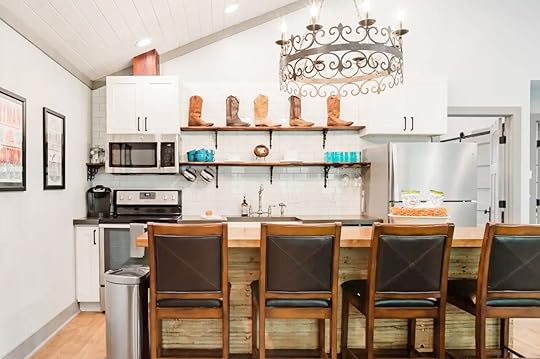
Photo: Airbnb
Check out this cowboy music-themed suite just minutes away from Downtown Nashville. This music-themed suite has an open floor plan with a spacious kitchen and living room area. This getaway is a newly renovated space with vintage accents within the West End and Green Hills area.
Four guests, one bedroom
Price: $126 per night

Photo: Airbnb

Photo: Airbnb

Photo: Airbnb

Photo: Airbnb
This charming villa will surely set you in the mood for a Nashville getaway. This sophisticated and relaxed villa has a full kitchen and spacious living room with a splash of colorful decor throughout. The home is full of natural light, has high ceilings, and it’s filled with various amounts of creative art. The villa also features a backyard patio space that truly transports guests into another dimension.
Five guests, two bedrooms
Price: $400 per night

Photo: Airbnb

Photo: Airbnb

Photo: Airbnb

Photo: Airbnb
Escape the everyday duties with this Airbnb Nashville retreat with its exposed brick, brick fireplace, and spacious front porch to lounge on after a day out in town. The home has a fully equipped kitchen and vintage-like living room that transports you back in time. The house is steps away from restaurants, boutique shops, and more of Downtown’s iconic spots and events.
Eight guests, four bedrooms
Price: $580 per night

Photo: Airbnb

Photo: Airbnb

Photo: Airbnb

Photo: Airbnb
This newly renovated and vibrant studio is the perfect base for a Nashville getaway. This dynamic studio has a full-size equipped studio kitchen, cozy queen-sized bed, and an outdoor pool to cool off on those hot summer Nashville days. The studio is within walking distance or just minutes away from popular destinations like Downtown Nashville, Vanderbilt/Belmont, and many shops and restaurants.
Two guests, one bedroom
Price: $100 per night

Photo: Airbnb

Photo: Airbnb

Photo: Airbnb
This bright and mid-century modern home offers guests a place to relax throughout all the Nashville adventures. This Airbnb Nashville property features a large, fully equipped kitchen that leads directly to the open living room. This space is ideal for a family or group of friends with plenty of hang-out spots throughout the home. The residence is just s short drive to downtown and seven minutes to The Nations.
Ten guests, three bedrooms
Price: $131 per night

Photo: Airbnb

Photo: Airbnb

Photo: Airbnb

Photo: Airbnb
Enjoy Nashville from a whole new perspective with this newly remodeled downstairs basement suite. This basement apartment has an open floor plan with a kitchen, living room, and two blocked-off spacious bedrooms. The suite also features a private backyard patio where guests can enjoy a river view, with unique visits from turkeys’ deer, rabbits, and occasionally a pair of bald eagles.
Six guests, two bedrooms
Price: $198 per night

Photo: Airbnb

Photo: Airbnb

Photo: Airbnb
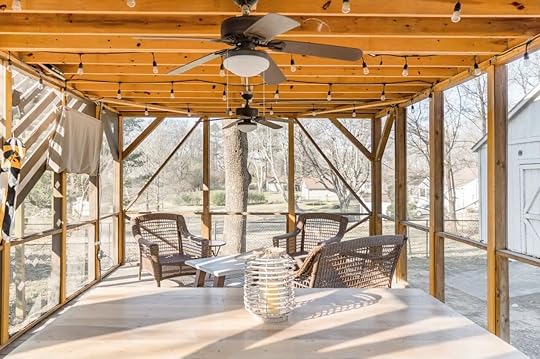
Photo: Airbnb
This renovated guest suite has an open concept layout and features urban chic, decor color, and furnishings. This modern suite is in a quiet and established neighborhood about six miles east of Downtown Nashville. The suite also has a shared backyard with a screened patio.
Four guests, one bedroom
Price: $119 per night

Photo: Airbnb

Photo: Airbnb

Photo: Airbnb

Photo: Airbnb
Sitting on East Nashville’s best street in the prime is this remodeled 1919 two-story Craftsman home. This Craftsman home is full of character and features a full kitchen and decorative living room space. There is also an outdoor patio with a BBQ grill and furniture for enjoying those perfect Nashville night-ins. If a night out on the town is more your style, the home is near Five Points and restaurants, shops, and bars.
Six guests, two bedrooms
Price: $164 per night

Photo: Airbnb

Photo: Airbnb

Photo: Airbnb

Photo: Airbnb
This stunning Airbnb Nashville property is another relaxing and inviting property in the heart of the Five Points area. This remodeled 1928 guesthouse features an all-white sleek interior and theme with a pop of color splashed throughout the home. The suite features an open floor plan with a kitchen area and a bright and airy living room area with doors that lead to the outdoor common area with a pool.
Four guests, one bedroom
Price: $149 per night

Photo: Airbnb

Photo: Airbnb

Photo: Airbnb

Photo: Airbnb
Set in one of Nashville’s best areas is this modern guesthouse suite. The suite belongs to a songwriter, so it’s full of musical instruments that guests can use. There is a full kitchen and open living room with a piano, guitar, and other playing instruments. The home is just off Route 65 and just minutes from downtown and blocks away from the 12 South neighborhood, Vanderbilt, Belmont, and Music Row. 
Two guests, one bedroom
Price: $103 per night
Common expat mistakes

Relocating to a new country is a huge undertaking. Even if you are a seasoned traveler, like me, living as an expat is a whole new ball game. From overpacking to shying away from complicated bureaucracy, there’s a long list of common mistakes every expat makes. Here’s our guide to how to become an expat and how to avoid basic mistakes, so you can get straight into living your idyllic mistake-free life abroad.
1. Not learning the languageFrom making friends to understanding your work or rental contract, having a decent grasp of the native language is fundamental. Dig out those high school textbooks or find an audiobook course and get prepared before you move.
2. Not even attempting to speak the languageLearning is often the easiest part, it’s finding the confidence to speak it when you’re there that’s the problem. The quicker you get over your embarrassment of having conversations riddled with mistakes the better. Especially as there’s nothing to be ashamed of, we’ve all made the awkward language faux pas. I once thought my dance teacher said not to fart, when actually he said not to get discouraged. It’s a perilously subtle pronunciation difference in Italian.
3. OverpackingUnless you’re moving to the middle of the desert, your new home will have shops. It’s tempting to pack five bottles of your favorite shampoo, coat hangers, and a six-month supply of underwear, but actually finding local versions of your regular products is part of making your new country your home.
4. Acting like a traveler, not a residentLiving abroad is not just long-term travel. You should find and frequent a local bar, get to know shop owners, find out where you can source your favorite foods, etc. Essentially you shouldn’t feel like you are just getting by, you should be comfortable.
5. Getting overwhelmed by the bureaucracyIt’s hard enough in your own language, so legal jargon and mountains of foreign paperwork can seem overwhelming. However, this shouldn’t stop you doing essential admin when you first arrive like making sure you are legally registered as a resident or that you have a local doctor. Try to contact expats already living there or find online forums and ask for advice about the process.
6. Not understanding the medical systemOn a similar note, it’s crucial to know where you stand with healthcare. Make sure you know your legal position as a foreigner, that you are fully registered in the system, that you know if you have to pay fees, and that you know how to access any medicines or treatments you need regularly.
7. Letting employers take advantage of youYou need a job from the beginning, even when your language skills are not good. Don’t let this mean you accept poor wages or don’t understand the system of payment. Get everything written out for you so you can take it away and translate.
8. Relying too much on your local partnerIt’s very tempting to use them as a crutch to deal with all the mind-boggling bureaucracy and, well, anything remotely complicated in their language. To a certain extent, it’s fine. When people start talking about taxes and national contributions my brain just switches off. I’m resigned to the fact that I’ll always need some help there. But you should try to do as much as possible on your own to be in control of your situation abroad.
9. Only making English-speaking and expat friendsIn the beginning, you may feel like your conversations in the native language are embarrassingly simplified because you can only use the present tense, but persevere. Say yes to invitations even if you know you’ll be totally lost in discussions. Just show your intention of friendship by buying lots of drinks and cooking for people. Sticky toffee pudding has forged some of my strongest friendships here.
10. Making no expat friendsYou will certainly need regular rants about the way things are in your new country — they don’t know how to queue, timetables are merely guidelines, their administrative systems feel like they’re from the ’60s — but often home friends don’t quite get it. Find another (not too) bitter expat to moan to and then remind each other that actually, your life is pretty great.
11. Neglecting your native languageWrite, read classic literature, watch serious TV programmes. You’ll find, otherwise, your English gradually becomes simplified and cleansed of colloquial or poetic expressions.
12. Thinking you won’t changeMaybe you find yourself disagreeing with your life-long friend from home, or starting to favor a different political viewpoint. When you move abroad you meet people who were brought up differently from you, you experience new political and economic situations, and discover values you’ve never held. You may find your ideas changing, and that you start to drift away from friends from home. You are learning and growing, it’s a good thing.
13. Stereotyping the cultureAnother reason not to make only expat friends is the tendency to start an “us” and “them: mentality. It may start as a joke but if you constantly simplify the local culture down into quirks and stereotypes you’ll find you’re just making yourself an outsider. Delve into the culture and discover the parts tourists and travelers don’t find when they’re just passing through.
14. Not realizing there is such a thing as reverse culture shockAfter four years of living in Italy, when I now return home I see how much I’ve become used to the Italian lifestyle. I can’t eat savory things for breakfast, I have to bite my tongue when people mispronounce “bruschetta” or say “cappuccinos,” I flinch when people greet me with a hug not a kiss on the cheek. It’s disconcerting, suddenly you’re not 100% at home in either country, home or abroad. After a while, though, you realize it’s not actually a bad thing. It makes you the most interesting person at a party, anyway. 
A version of this article was previously published on March 15, 2015, and was updated on March 16, 2022.
More like thisExpat Life7 Fears that Only Expats UnderstandMarch 15, 2022
20 Stunning Images from the Sony World Photography Awards that Show the Beauty of the World

The Sony World Photography Awards is one of the most well-known free photography competitions where people compete to create the best of the best single-shot images around the globe. The World Photography Organisation has recently announced its category winners and shortlist for the open competition of the Sony World Photography Awards 2022. More than 170,000 images were entered to this year’s competition, according to a press release.
More than 100 photographers were shortlisted, and there are 10 category winners. Category winners will receive digital imaging equipment from Sony and go on to compete for the Open Photographer of the Year title. The overall winner will be announced on April 12 and receive a $5,000 prize, while selected work by winners and shortlisted photos will be on display at the Sony World Photography Awards at Somerset House from April 13 to May 2, 2022. The student, youth, open, and professional competition of the Sony World Photography Awards 2022 will be announced along with the overall winner and will also go on display. Hideko Kataoka, director of photography at Newsweek Japan, judged the competition this year.
“I enjoyed judging this wide variety of categories from Object to Street Photography,” she said in a statement. “Creativity and originality were very important in choosing a winning image and it was terrific to see the excitement and joy of the photographers when they captured the moment. The photographs in this competition each make a coherent visual statement about a situation or particular circumstance in an elegant visual way.”
Below are the winners in each category, followed by the photos that were shortlisted for the travel category.
Old Meets New — Architecture
Photo: Anthony Chan/Sony World Photography Awards 2022
Anthony Chan, Hong Kong
Untitled — Creative
Photo: Isabel Salmon/Sony World Photography Awards 2022
Isabel Salmon, United Kingdom
Exodus — Landscape
Photo: Vicent Ansola/Sony World Photography Awards 2022
Vicente Ansola, Spain
The Honey Collector — Lifestyle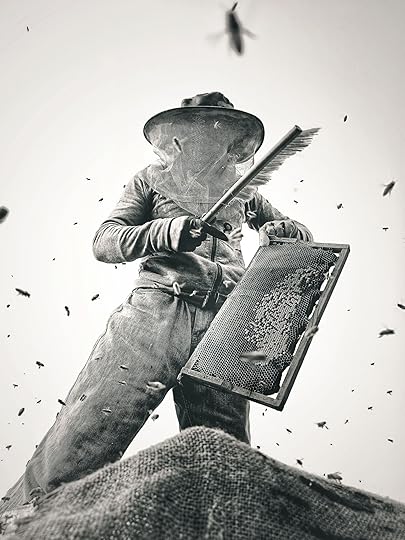
Photo: Utsab Ahamed Akash/Sony World Photography Awards 2022
Utsab Ahamed Akash, Bangladesh
Surfing festival — Motion
Photo: Raido Nurk/Sony World Photography Awards 2022
Raido Nurk, Estonia
Anger Management — Natural World and Wildlife
Photo: Scott Wilson/Sony World Photography Awards 2022
Scott Wilson, United Kingdom
Segundo Uso (Second Use) II — Object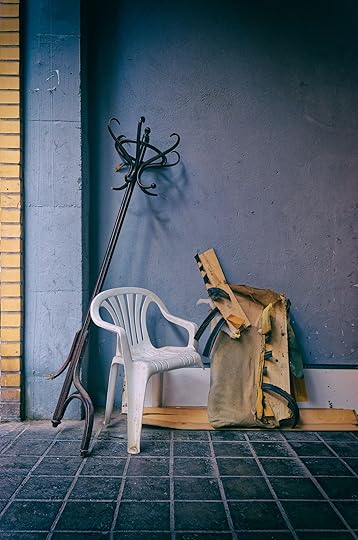
Photo: Leonardo Reyes-González/Sony World Photography Awards 2022
Leonardo Reyes-González, Mexico
The Endless Summer – Surf Trip — Portraiture
Photo: Simone Corallini/Sony World Photography Awards 2022
Simone Corallini, Italy
Havana Running Away — Street Photography
Photo: Etienne Souchon/Sony World Photography Awards 2022
Etienne Souchon, France
Bike with Flowers — Travel
Photo: Thanh Nguyen Phuc/Sony World Photography Awards 2022
Thanh Nguyen Phuc, Vietnam
Balloon Festival — Travel shortlist
Photo: Darshan Ganapathy/Sony World Photography Awards 2022
Darshan Ganapathy, India
Air Sheep — Travel shortlist
Photo: Ioan Maga/Sony World Photography Awards 2022
Ioan Maga, Romania
Canyon Views — Travel shortlist
Photo: Claudia Magnani/Sony World Photography Awards 2022
Claudia Magnani, Italy
Human Nature — Travel shortlist
Photo: Alessandro Accordini/Sony World Photography Awards 2022
Alessandro Accordini, Italy
Lago di Braies — Travel shortlist
Photo: Franois Philippe/Sony World Photography Awards 2022
Franois Philippe, France
Magic Rugs The Place — Travel shortlist
Photo: Ashok Gidwani/Sony World Photography Awards 2022
AshokGidwani, India
Sustainable Energy — Travel shortlist
Photo: Eduard Gutescu/Sony World Photography Awards 2022
Eduard Gutescu, Romania
Tangi Sar — Travel shortlist
Photo: Milad Nalbandiyan/Sony World Photography Awards 2022
Milad Nalbandiyan, Iran
Terraced Fields in the Water Season — Travel shortlist
Photo: Hong Nguyen/Sony World Photography Awards 2022
Hong Nguyen, Vietnam
Untitled — Travel shortlist
Photo: Huu Binh Nguyen/Sony World Photography Awards 2022
Huu Binh Nguyen, Vietnam 
Matador Network's Blog
- Matador Network's profile
- 6 followers



